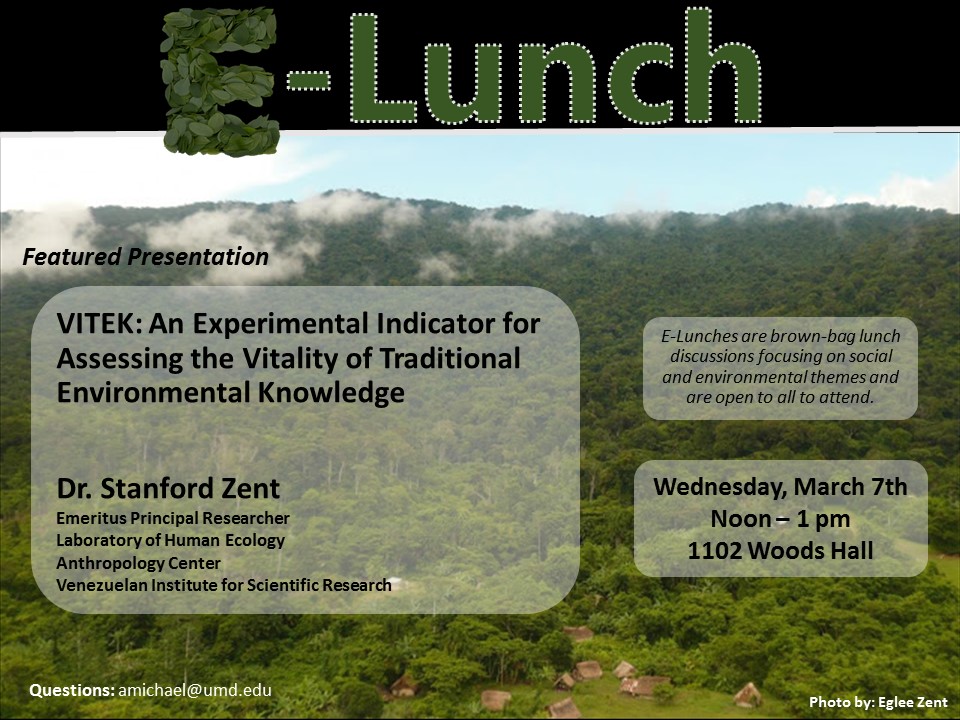Upcoming E-Lunch: March 7th
Please join us Wednesday, March 7th to hear from Dr. Stanford Zent (Emeritus Principal Researcher, Venezuelan Institute for Scientific Research) as he discusses VITEK, an experimental indicator created to help measure the status and trends of traditional ecological knowledge. (See below for full abstract.)

VITEK: An Experimental Indicator for Assessing the Vitality of Traditional Environmental Knowledge
Dr. Stanford Zent
Investigador Titular Emérito/Emeritus Principal Researcher
Laboratorio de Ecología Humana/Laboratory of Human Ecology
Centro de Antropología/Anthropology Center
Instituto Venezolano de Investigaciones Científicas/Venezuelan Institute for Scientific Research
There is general agreement that traditional environmental knowledge (TEK) is a valuable resource for rural development, biodiversity conservation, climate change assessment, food security, public health, and other practical endeavors. However, there is mounting evidence that all over the world TEK richness and complexity is eroding in the face of globalization and environmental change. In view of this predicament, there have been numerous and varied efforts to protect and preserve fragile TEK systems. A recent orientation in this field is to develop indicators that measure the status and trends of TEK in support of global policy initiatives (e.g., Aichi Targets of the CBD Strategic Plan) as well as community efforts to maintain and use TEK, for their own benefit and for the broader benefit of humanity. The VITEK, which stands for Vitality Index of Traditional Environmental Knowledge, is an experimental indicator created in response to this challenging situation. It consists of a protocol for data collection and statistical analysis designed to assess the rate of retention of local knowledge across generations. Design features include: direct measurement of TEK itself (rather than proxy variables), replicability, scalability, quantitative measurement, local appropriateness, global applicability, and gender sensitivity. This type of measure will potentially have multiple applications – e.g., cultural heritage protection, community development, ethnoenvironmental education – and appeal to diverse user groups - local communities and their organizations, policy-makers, aid-providers, and researchers. From 2010-2016, a pilot field study of the indicator was implemented and tested at five bioculturally distinct sites, including three indigenous groups (Piaroa, Jotï and Eñepa) and two mestizo communities (Paramero, Chuaense), all of which are located in Venezuela. This presentation will review the justification, method, and potential applications of the VITEK and, as mode of demonstration, summarize and discuss some of the results obtained from the pilot study.



